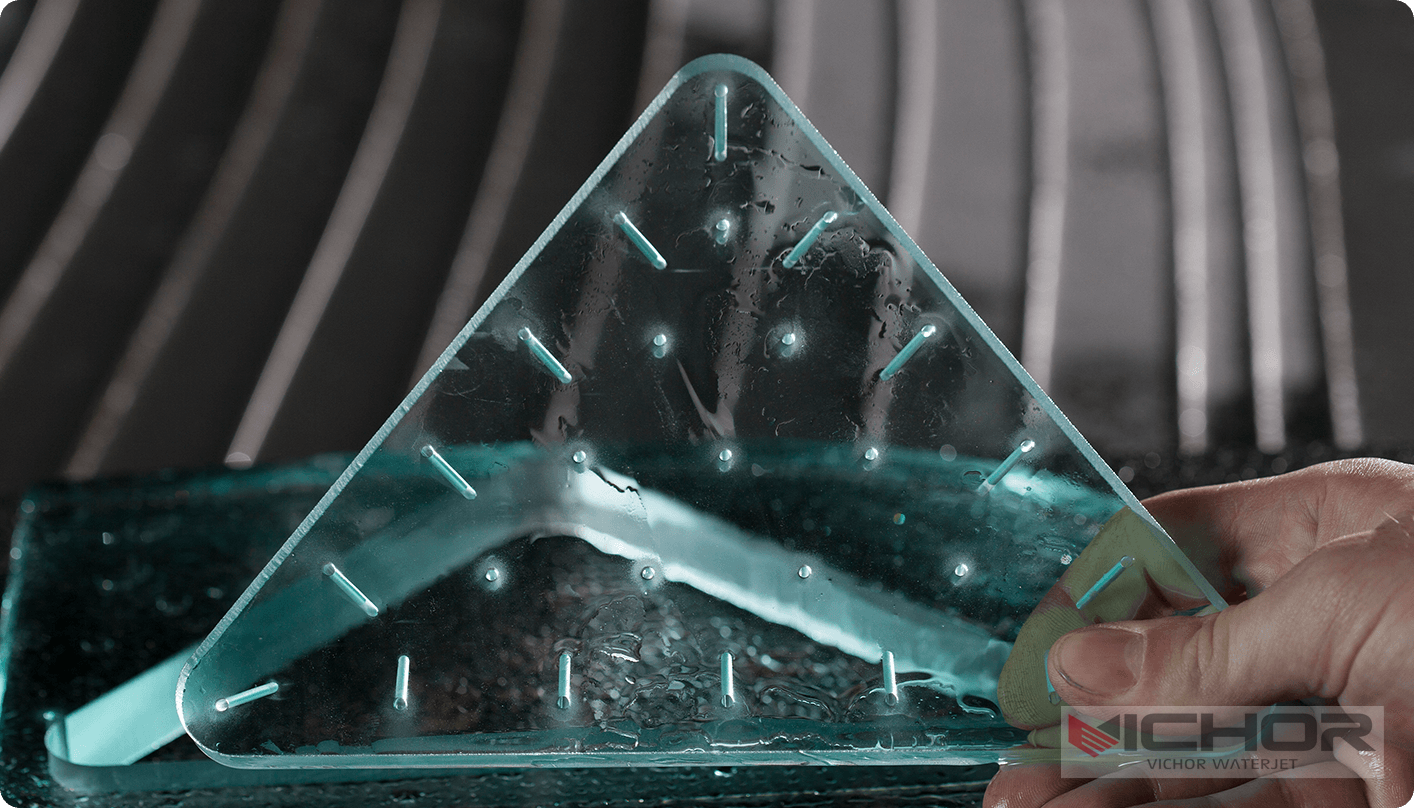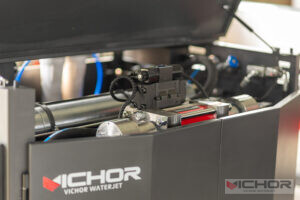
The Top 7 Benefits of Using a Waterjet Cutting System for Food in 2025
In today’s competitive food industry, precision, efficiency, and hygiene are paramount. One technology that has revolutionized food processing is the waterjet cutting system for food. This innovative method uses high-pressure water jets, often mixed with abrasives for tougher materials, to slice through various food items with incredible accuracy. Unlike traditional cutting techniques, a waterjet cutting system for food eliminates heat-affected zones, reduces waste, and maintains product integrity. As consumers demand higher quality and safer food products, adopting a waterjet cutting system for food can give businesses a significant edge. In this comprehensive guide, we’ll explore the core aspects of this technology, compare it with other methods, delve into applications and selection criteria, discuss costs, and provide insights into finding reliable suppliers. Whether you’re in meat processing, bakery, or ready-to-eat meals, understanding how a waterjet cutting system for food works can transform your operations.
Core Information and Comparisons of Waterjet Cutting Systems
A waterjet cutting system for food operates by propelling water at extremely high pressures—often exceeding 60,000 psi—through a narrow nozzle to cut materials. In food applications, this typically involves pure water jets without abrasives to ensure safety and hygiene. The system is controlled by computerized numerical control (CNC) for precise cuts, making it ideal for intricate shapes and consistent portions. One of the key advantages of a waterjet cutting system for food is its ability to handle a wide range of textures, from soft fruits to frozen meats, without compromising nutritional value or appearance.
When comparing a waterjet cutting system for food to other methods, several distinctions stand out. Traditional blade cutting, for instance, can cause bruising, deformation, and cross-contamination due to physical contact. Laser cutting, while precise, generates heat that may cook edges or alter flavors, which is unacceptable in fresh food products. In contrast, a waterjet cutting system for food is a cold-cutting process, preventing thermal damage and preserving the natural state of items like cheese, cakes, or seafood. Additionally, waterjet systems are more hygienic; the continuous water flow cleans the cut surface, reducing bacterial growth risks. This makes a waterjet cutting system for food a superior choice for compliance with food safety standards like HACCP and FDA regulations. By minimizing waste and enhancing shelf appeal, this technology supports sustainability goals while boosting profitability.
Applications and Selection Guide for Food Waterjet Systems
The versatility of a waterjet cutting system for food extends across numerous segments of the food industry. In meat processing, it cleanly slices through frozen blocks, poultry, and processed meats, ensuring uniform portions for retail or further processing. For bakeries, a waterjet cutting system for food effortlessly handles delicate items like cakes, pastries, and bread without crushing them, enabling intricate designs and consistent sizing. In the produce sector, it cuts fruits and vegetables into precise shapes for salads, snacks, or ready meals, while dairy applications include slicing cheese and yogurt blocks. Even in seafood, a waterjet system can portion fish fillets or shellfish with minimal waste. The adaptability of a waterjet cutting system for food also shines in custom food production, such as creating branded shapes for marketing or meeting specific dietary requirements.
Selecting the right waterjet cutting system for food involves considering several factors to match your operational needs. First, assess the types of food you’ll be cutting—softer items may require lower pressure settings, while harder foods like frozen products might need higher capabilities. Look for systems with hygienic design features, such as easy-to-clean surfaces, stainless steel components, and compliance with food-grade standards. Production volume is another critical factor; high-throughput facilities may benefit from automated waterjet cutting systems for food with conveyor integration, whereas smaller operations might opt for manual or semi-automatic models. Additionally, evaluate the software compatibility for design flexibility and the availability of technical support. By prioritizing these aspects, you can invest in a waterjet cutting system for food that enhances efficiency, reduces downtime, and scales with your business growth.
Finding Commercial Services and Suppliers
When sourcing a waterjet cutting system for food, identifying reputable suppliers and service providers is crucial for long-term success. Start by researching manufacturers and distributors with proven experience in the food industry. Look for companies that offer comprehensive solutions, including installation, training, and maintenance services. A reliable supplier should provide case studies or references demonstrating their expertise with a waterjet cutting system for food, highlighting successful implementations in similar businesses. Attend industry trade shows or webinars focused on food technology to connect with potential vendors and see demonstrations firsthand.

Moreover, consider the after-sales support when choosing a provider for your waterjet cutting system for food. Ensure they offer spare parts, troubleshooting assistance, and regular maintenance packages to minimize operational disruptions. Reading online reviews and seeking recommendations from industry peers can help you gauge reliability. It’s also wise to request quotes from multiple suppliers to compare offerings, but remember that the cheapest option may not always provide the best value—focus on quality, warranty terms, and customization options. By thoroughly vetting suppliers, you can secure a waterjet cutting system for food that meets your specific requirements and adheres to food safety regulations, ultimately safeguarding your investment and enhancing production efficiency.
Cost and Pricing Considerations
Understanding the costs associated with a waterjet cutting system for food is essential for budgeting and ROI calculations. The initial investment can vary widely, typically ranging from $50,000 to over $200,000, depending on factors like system size, automation level, and additional features. Basic manual systems are more affordable, while fully automated waterjet cutting systems for food with advanced CNC controls and hygiene enhancements command higher prices. Beyond the purchase price, consider installation costs, which may include site preparation, plumbing, and electrical work to support the high-pressure pumps.
Operational expenses for a waterjet cutting system for food include water consumption, electricity for pumps, and maintenance. Water usage is generally efficient, as many systems incorporate recycling to reduce waste, but filter replacements and pump servicing can add to ongoing costs. Labor costs may decrease due to automation, but training staff to operate the system is an upfront expense. When evaluating the total cost of ownership, factor in potential savings from reduced food waste, higher yield, and improved product quality. For instance, a waterjet cutting system for food can minimize trim loss by up to 20% compared to traditional methods, leading to significant long-term savings. Leasing or financing options may also be available, making it easier to adopt this technology without a large capital outlay. By analyzing these cost elements, businesses can make informed decisions and justify the investment in a waterjet cutting system for food based on productivity gains and competitive advantages.
In-Depth Technology and Process Insights
Delving into the technology behind a waterjet cutting system for food reveals why it’s so effective for delicate and varied food items. The core component is the high-pressure pump, which intensifies water pressure to extreme levels using intensifier or direct-drive technologies. This pressurized water is then directed through a nozzle, often made of sapphire or diamond, to create a fine, coherent jet. In food applications, the pure waterjet method is preferred to avoid contamination, whereas abrasive jets might be used in non-food industrial settings. The CNC system guides the nozzle along programmed paths, allowing for intricate cuts, such as dicing vegetables or shaping meat products, with tolerances as tight as 0.1 mm.
The process of a waterjet cutting system for food also emphasizes hygiene and customization. Advanced systems include features like self-cleaning cycles, antimicrobial coatings, and easy disassembly for sanitation, which are critical in food processing environments. From a technical perspective, parameters like pressure, flow rate, and traverse speed can be adjusted to suit different food textures—for example, lower pressures for soft berries and higher settings for frozen foods. This flexibility makes a waterjet cutting system for food adaptable to seasonal products or new recipes. Furthermore, the lack of mechanical contact reduces wear and tear on components, extending the system’s lifespan. As technology evolves, integration with IoT and data analytics is enhancing predictive maintenance and optimization, ensuring that a waterjet cutting system for food remains at the forefront of food manufacturing innovation. By mastering these technical aspects, operators can maximize efficiency and maintain consistent quality across diverse product lines.
In conclusion, a waterjet cutting system for food offers unparalleled benefits in precision, hygiene, and versatility, making it a smart investment for modern food businesses. From core comparisons to practical applications and cost analysis, this technology addresses key industry challenges while supporting growth and sustainability. As you explore options, remember to prioritize suppliers who understand your needs and offer robust support. Embracing a waterjet cutting system for food can streamline your operations, reduce waste, and elevate product quality, positioning your company for success in a dynamic market.
Frequently Asked Questions
Q1: What is a waterjet cutting system for food, and how does it work?
A1: A waterjet cutting system for food is a advanced technology that uses high-pressure water jets to cut various food items with precision. It works by pumping water at extremely high pressures through a specialized nozzle, creating a focused stream that slices through food without heat or physical contact. This cold-cutting process preserves the food’s texture, flavor, and nutritional value, making it ideal for delicate products like fruits, baked goods, and meats. The system is often computer-controlled for accurate, repeatable cuts, ensuring consistency in food portioning and design.
Q2: How does a waterjet cutting system for food compare to traditional blade cutting?
A2: Compared to traditional blade cutting, a waterjet cutting system for food offers several advantages. Blade cutting can cause bruising, deformation, and cross-contamination due to direct contact, whereas waterjet cutting is non-contact, reducing these risks. It also eliminates the need for sharpening blades and minimizes waste by making cleaner cuts. Additionally, waterjet systems are more hygienic, as the water flow helps clean the cut surface, adhering better to food safety standards. This makes a waterjet cutting system for food superior for maintaining product quality and efficiency.
Q3: What types of food can be processed with a waterjet cutting system?
A3: A waterjet cutting system for food is highly versatile and can process a wide range of food items, including meats, poultry, seafood, fruits, vegetables, dairy products like cheese, and baked goods such as cakes and bread. It handles varying textures effectively, from soft and juicy foods to frozen or hard items, without compromising integrity. This flexibility allows businesses to use one system for multiple product lines, enhancing operational efficiency and adaptability in food production.
Q4: What are the maintenance requirements for a waterjet cutting system for food?
A4: Maintaining a waterjet cutting system for food involves regular checks and cleaning to ensure optimal performance and hygiene. Key tasks include inspecting and replacing nozzles and seals, cleaning filters to prevent clogging, and monitoring high-pressure pumps for wear. Hygienic maintenance is crucial, so components should be disinfected frequently, and systems with self-cleaning features can simplify this. Most suppliers provide maintenance schedules and support, helping minimize downtime and extend the lifespan of the equipment.
Q5: How much does it cost to install and operate a waterjet cutting system for food?
A5: The cost of installing and operating a waterjet cutting system for food varies based on factors like system size, automation level, and specific features. Initial installation can range from $50,000 to over $200,000, including setup and training. Operational costs include water, electricity, and maintenance, which may amount to a few thousand dollars annually. However, these expenses are often offset by reduced waste, higher yields, and improved productivity. Businesses should consider the long-term ROI when evaluating the investment in a waterjet cutting system for food.
continue reading



